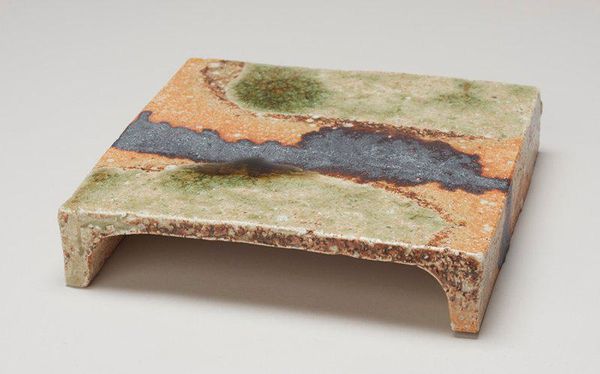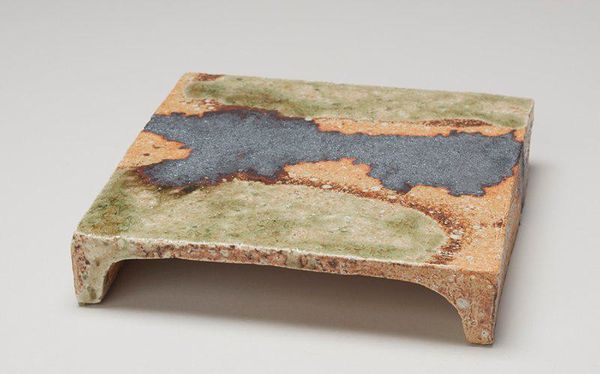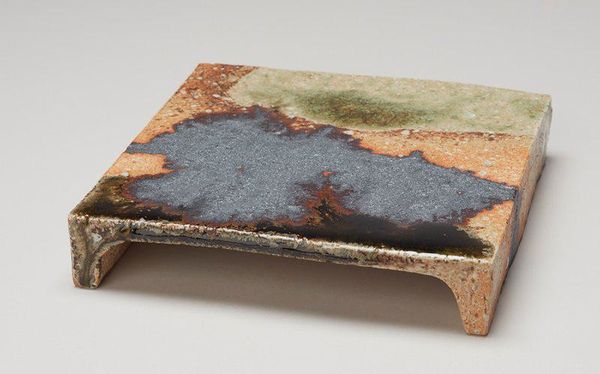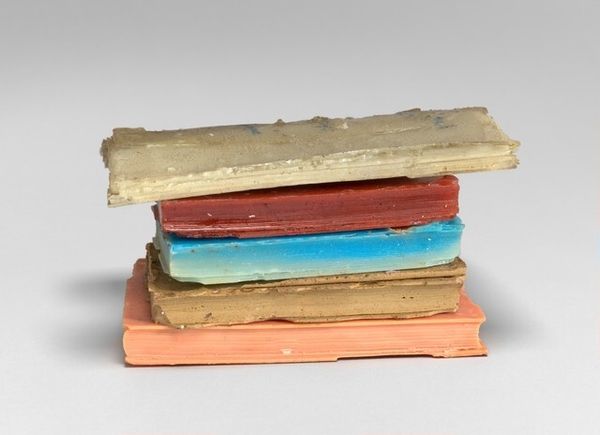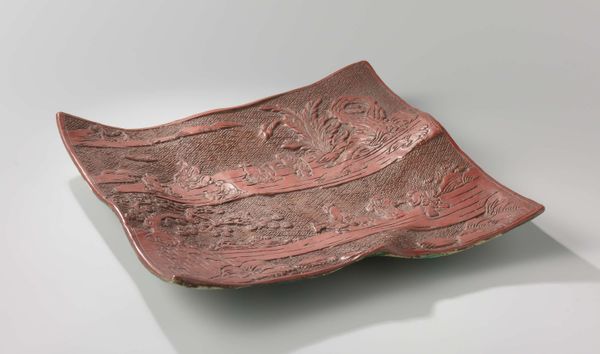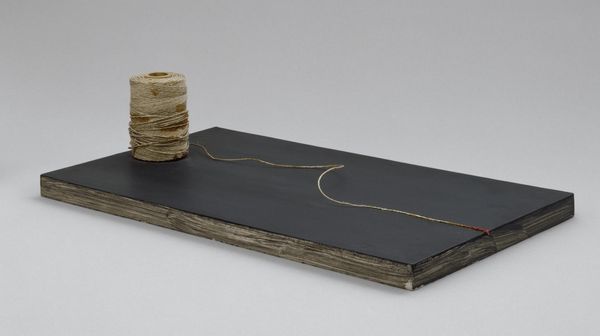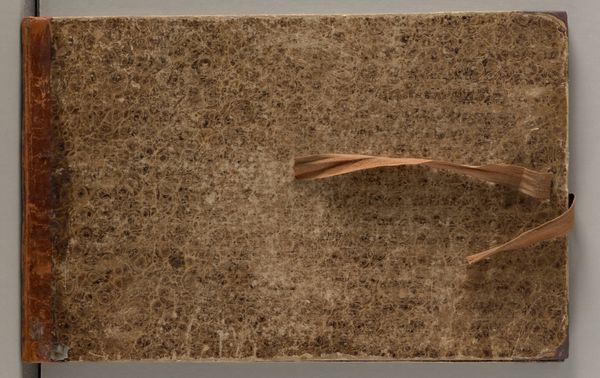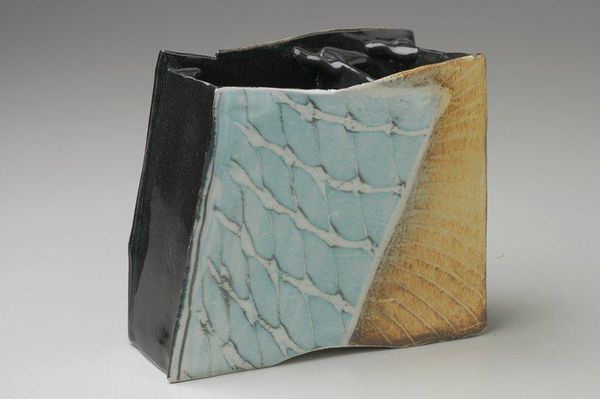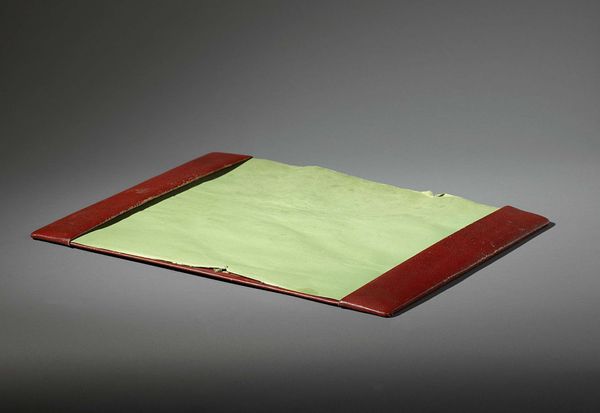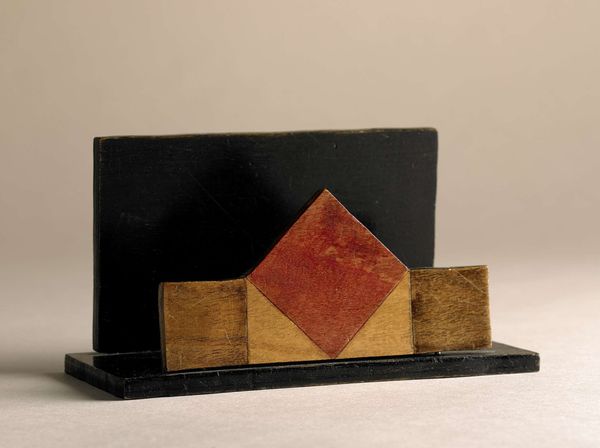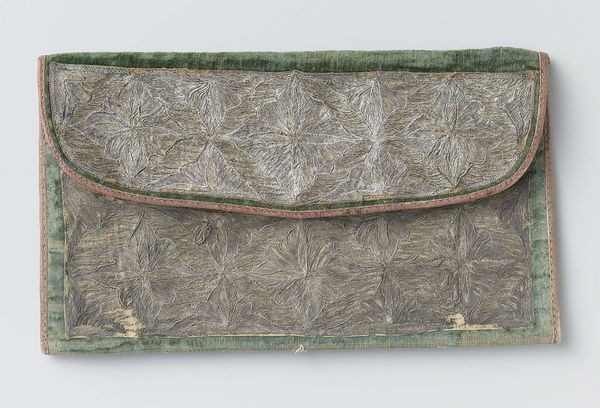
ceramic, earthenware
ceramic
earthenware
ceramic
abstraction
decorative-art
Dimensions: 1 3/8 × 7 × 7 in. (3.49 × 17.78 × 17.78 cm)
Copyright: No Known Copyright
Curator: This is "Plate" by Hasu Yoshitaka, created in 2010. The medium is listed as ceramic and earthenware, and you can see it at the Minneapolis Institute of Art. Editor: My first impression is that it feels surprisingly elemental. There’s almost a miniature landscape at play—earth, water, perhaps some weathered vegetation. Curator: Absolutely. Yoshitaka’s focus really comes through in his manipulation of the raw materials. The way the glaze has been applied, almost haphazardly, showcases the unpredictable nature of the kiln. We’re not talking about fine porcelain; there’s a raw, earthy quality to this piece. And its production. The piece highlights the tradition of pottery. The artist might intend this as functional or aesthetic use to comment the value of earthenware for functional value as object from the world of mass consumerism of cheap goods and functional aesthetic. Editor: Precisely! Thinking about its role in decorative arts, I see how it plays into a history of elevating functional objects. Museums historically segregated craft from fine art, and seeing a ceramic plate here prompts questions about this artificial division. Who determines what's worthy of display? And how is the artistic act viewed as work that deserves its own category? It speaks volumes to the shifting status of craft within institutional spaces. Curator: That tension between utility and aesthetics is very powerful. This seemingly simple form belies the artist's intentional decision to push the medium. Think about the process of making such a form: the gathering of clay, the throwing, firing and the artist’s relationship to craft. Editor: It makes you think, doesn’t it? More than just a plate, it becomes a commentary on art's societal function, or maybe the blurring of it, where its material properties and purpose collide to question these assumptions. It really encapsulates how one views the use of art in different social contexts and spheres of interest. Curator: It prompts reconsideration of functional value from artisanal production in an industrialized world. Editor: Exactly. A single object leading to larger dialogues about art and society, right? Curator: Indeed.
Comments
No comments
Be the first to comment and join the conversation on the ultimate creative platform.
